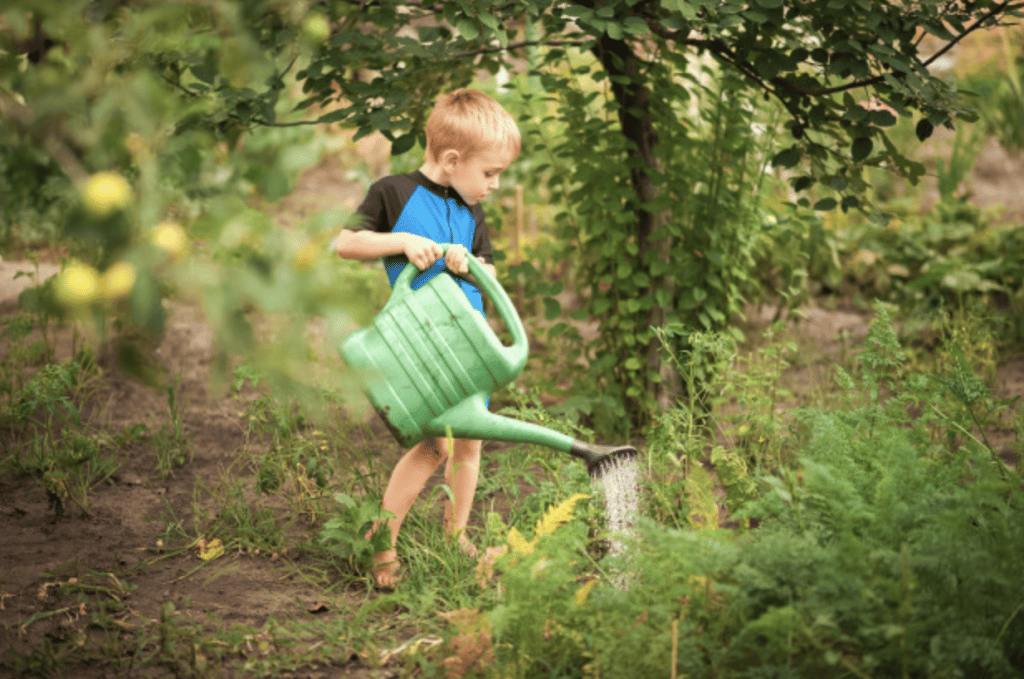
Organic gardening for beginners is becoming increasingly popular among people looking for a way to reduce their environmental impact and enjoy fresh, nutritious food. In fact, according to the Environmental Working Group, organic produce contains on average 20 percent more nutrients than conventional produce.
Starting an organic garden can seem daunting for beginner gardeners, but with the right information and tools, anyone can create and maintain an organic garden that will produce healthy fruits and vegetables. This article will provide an overview of how to start an organic garden for beginners.
The first step in creating an organic garden is to choose the best place to plant it. To do this, consider factors like sunlight availability and soil quality to determine which plants will thrive there. When selecting what types of plants to grow, research which vegetables are best suited for your climate and growing season so that you don’t end up with a crop that won’t fully mature before the weather becomes too cold or hot.
Additionally, consider the amount of space available when deciding how many plants you want to grow as some varieties require more space than others.
Once you have chosen your location and selected the plants that you want to grow, it’s time to get started with planting! This involves preparing the soil, purchasing seeds or seedlings from a local nursery or online store, and getting familiar with basic gardening techniques such as watering and pruning.
Finally, be sure to mulch your soil regularly to keep weeds away, retain moisture in the soil, and add important nutrients back into it. With these tips in mind, you’ll be well on your way toward starting a successful organic garden!
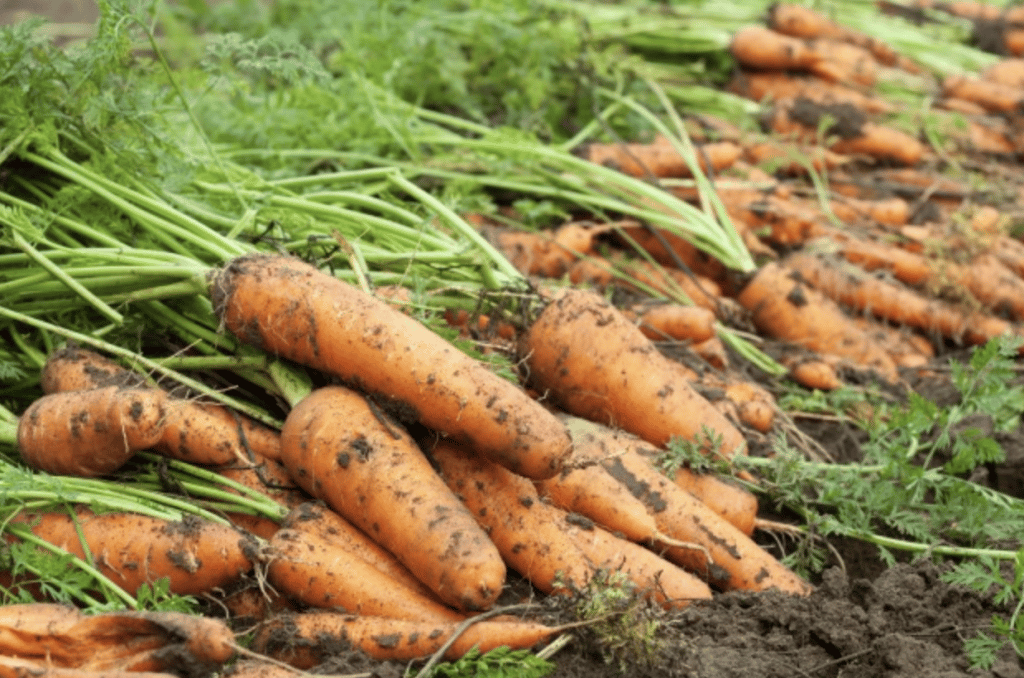
Choose Your Site
The first step in beginning an organic garden is choosing the site. A successful organic garden starts with a well-planned garden bed. When considering a location, it is important to ensure there is enough sunlight and access to water. Whether you are creating a traditional outdoor garden bed or growing plants in containers, make sure you have adequate space for the plants to grow. Additionally, it is important to select quality garden soil that has natural nutrients or add organic fertilizer when needed. Organic gardening basics involve understanding the type of soil you have and making necessary adjustments to make sure your plants receive the right nutrients and environment they need to grow successfully. Finally, consider if container gardening is a better option for your space constraints or lifestyle needs before investing in your soil.
Invest In Your Soil
For the beginner organic gardener, it is essential to invest in your garden soil. Healthy and rich soil will bring out the best of your garden, just like a compost pile that has been carefully tended to by an experienced organic gardener. The right mixture of organic mulch, compost, and manure can create the perfect environment for plants to thrive.
Preparing a good soil base is key for any successful garden. It is important to know the type of soil you have before you start planting. If your soil is heavy clay or sandy, you may need to add additional compost or manure to create an ideal growing environment. If you are unsure what type of soil you have, take a sample to a local nursery or agricultural extension office for help determining the best way to improve your soil quality.
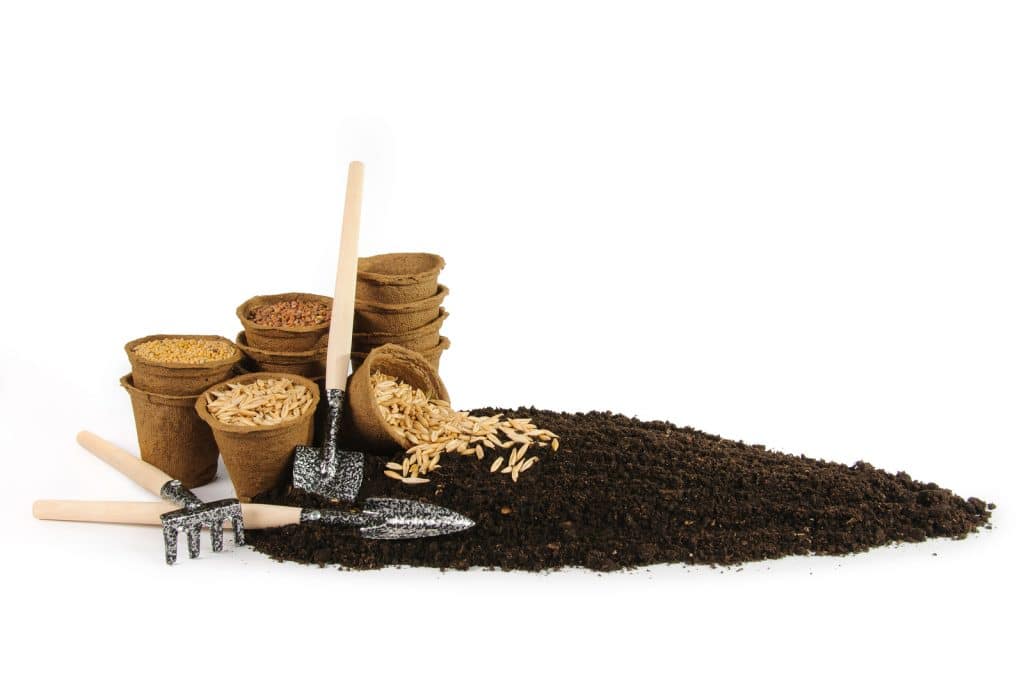
When making improvements, keep in mind that adding too much nitrogen-rich fertilizer can harm plants and make them more vulnerable to pests and diseases. By understanding what nutrients your plants need and when they need them, you will be able to create a healthy ecosystem in your garden where plants can flourish. After investing in your soil, the next step is selecting the perfect plants for your organic garden.
Select The Perfect Plants
Once the soil has been amended, it is time to select the perfect plant types for your organic garden. Vegetable gardens are typically composed of different types of vegetables and herbs, though there are also many flowers and fruits that can be grown organically.
When selecting the type of crop you will be using from a seed packet, it is important to read the label carefully as some seeds may require special care when planting or may have resistance to certain fungal diseases. Additionally, certain varieties of vegetables and fruits may be better suited for your climate than others.
When creating an organic garden, it is important to consider not only what you would like to eat but also what will work best in your area. Plants that are native to your region will generally require less maintenance and water than those that are brought in from other areas.
Additionally, if you plan on growing organic foods for sale or consumption, you should make sure that the variety you choose is from high-quality seeds and is certified as organic by a reputable organization.
Once you have chosen the perfect plants for your garden, it is time to prepare them for planting.
This includes removing any weeds or debris from around their root systems, loosening the soil so it can grow easily, and adding compost or mulch if necessary. Finally, it is time to plan how to water wisely in order to ensure maximum growth potential for all of your plants.

Water Wisely
Organic gardening requires careful consideration of water usage. Watering an organic garden should be done with purpose and moderation. To ensure that plants receive adequate water, one inch of water should be provided every week. This can be accomplished through a variety of methods such as drip irrigation or hand-watering. It is important to use soapy water when watering the plants as it will help them absorb the liquid more efficiently and prevent any potential diseases caused by stagnant standing water on the foliage.
When watering, it is important to remember that organic gardens do not require chemical fertilizers or pesticides, which means that liquid fertilizers must also be used for nourishment. Liquid fertilizer should be used at half strength and watered at the base of each plant to promote healthy roots and growth. These nutrients are helpful for achieving optimal health in the garden but should only be applied every four weeks or so during the growing season.
Watering an organic garden is essential for its success, but it must be done with restraint and care. Too much water can lead to root rot, while too little can cause severe damage to crops. With careful monitoring and attention, an organic garden can flourish with the right amount of moisture provided.
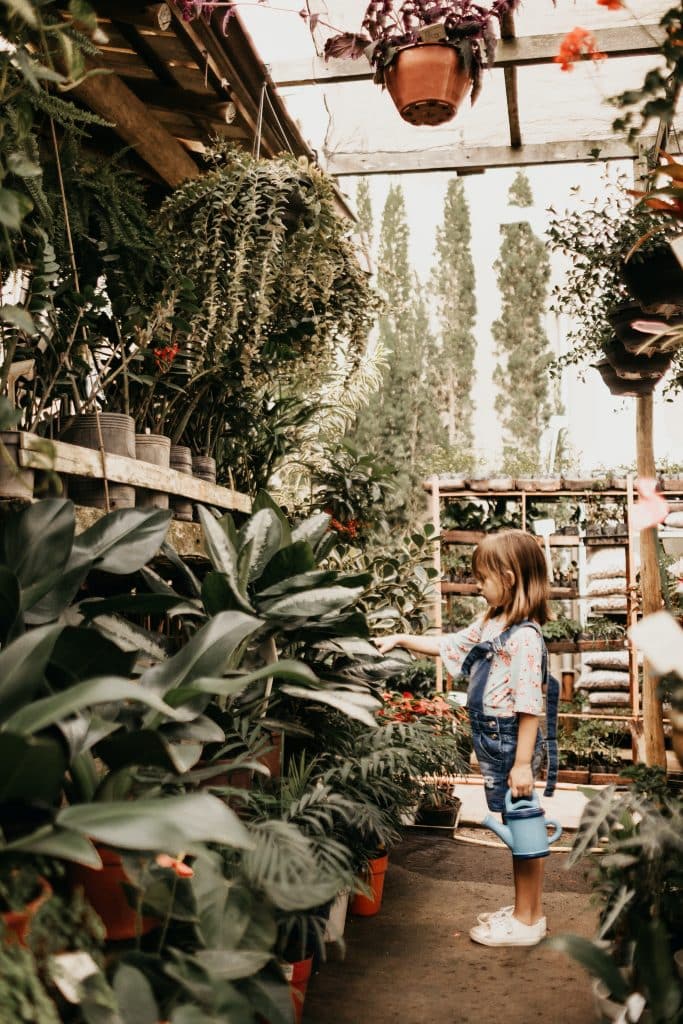
Feed Your Garden
Fertilizing your organic garden is an essential part of successful gardening. Leafy greens, flowers, fruits, and vegetables need nutrient-rich soil to grow strong and produce a bountiful harvest. Organic gardening is a natural way to feed the soil without using synthetic chemicals or genetically modified organisms. Natural fertilizers such as aged compost, organic matter, bone meal, fish emulsion, bat guano, and seaweed extract provide essential nutrients for healthy plants.
Open-pollinated seeds are another important component of organic gardening because they are not hybrids or genetically modified. Hybrids will not reproduce true to form when saved from season to season. Open-pollinated seeds can be saved and planted in subsequent seasons providing the same variety of crops each year.
Mulching is another important step in maintaining an organic garden. It helps conserve water, adds organic material to the soil as it decomposes over time, reduces weed growth by blocking sunlight from reaching the soil surface, and prevents slug damage on tender seedlings. By properly caring for your organic garden, you will be rewarded with fresh produce throughout the growing season.
Mulch To Maintain
Mulching is an important part of creating an organic garden. It helps to maintain the type of soil required for successful gardening and keeps weeds at bay. There are several types of mulch that can be used, including leaf mulches and wood chips. It is recommended to apply a layer of mulch approximately two inches deep around plants in order to provide optimal protection. The mulch should also be replenished regularly in order to ensure continued protection against weeds and maintain the desired soil composition. Additionally, it is important not to apply too much mulch as this can smother the roots and impede growth.
Organic gardens require careful maintenance in order to thrive. Mulching is just one element of maintaining a healthy and productive garden. By applying the correct amount of mulch, gardeners can help keep weeds away while simultaneously protecting their plants from the elements. With proper care, organic gardens can bring joy and nourishment for years to come. Transitioning now into how the rotation of crops is necessary for success in any organic garden.

Rotate Crops for Success
Organic gardening allows individuals to cultivate fresh produce without the use of synthetic fertilizers or pesticides, but it is important for beginners to understand that rotating crops is essential for successful organic gardening. Rotating crops helps prevent the buildup of plant-specific diseases in the soil and can improve soil quality over time. Furthermore, rotating crops can also encourage beneficial insects, such as ladybugs and praying mantises, which help control pests like aphids.
It is important to remember that different crop families have different nutritional needs and respond differently to soil conditions. For example, some plants thrive in acidic soils while others require more neutral soil pH levels. Understanding these differences can help gardeners determine what combinations of plants will work best together in their organic gardens. Additionally, certain plants should not be placed in close proximity due to potential disease transmission and competition for resources like water and nutrients.
Rotating crops effectively requires careful planning so that each family is planted in a different area year after year; this ensures that new seedlings are not exposed to the same insect infestations or diseased leaves as the previous year’s crop. This also gives valuable rest periods for soil fertility restoration, allowing for healthy growth with minimal fertilizer inputs. By following these guidelines, beginner organic gardeners can ensure their gardening season is productive and sustainable for years to come.

Frequently Asked Questions
What Type of Soil Should I Use To Start An Organic Garden?
The idea of starting an organic garden is a daunting prospect, and an understanding of the type of soil needed to begin such an endeavor is essential. An organic garden requires fertile soil that is full of nutrients, allowing for healthy plants to thrive. To this end, it is important to find or create a soil mix that can provide the necessary conditions for successful growth.
One of the most important steps in creating optimal soil conditions for an organic garden is to choose a combination of ingredients that will enable healthy plant growth. A mixture of compost, peat moss, and vermiculite should be used as a base, adding additional components like perlite and sand if desired. As with baking a cake, the correct proportions are critical to achieving success; too much or too little compost or moss can have an adverse effect on the fertility of the soil. Like a symphony orchestra, each ingredient has its own unique role in creating the perfect environment for plants to flourish and bear fruit.
Achieving ideal soil conditions for your garden plants does not happen overnight but rather requires patience and dedication – like any good thing worth having! With time and effort invested into selecting the best ingredients and their relative proportions, it is possible to create nutrient-rich soil capable of fostering bountiful harvests of your favorite vegetables in your organic garden for years to come. All that’s left now is to start sowing those seeds!
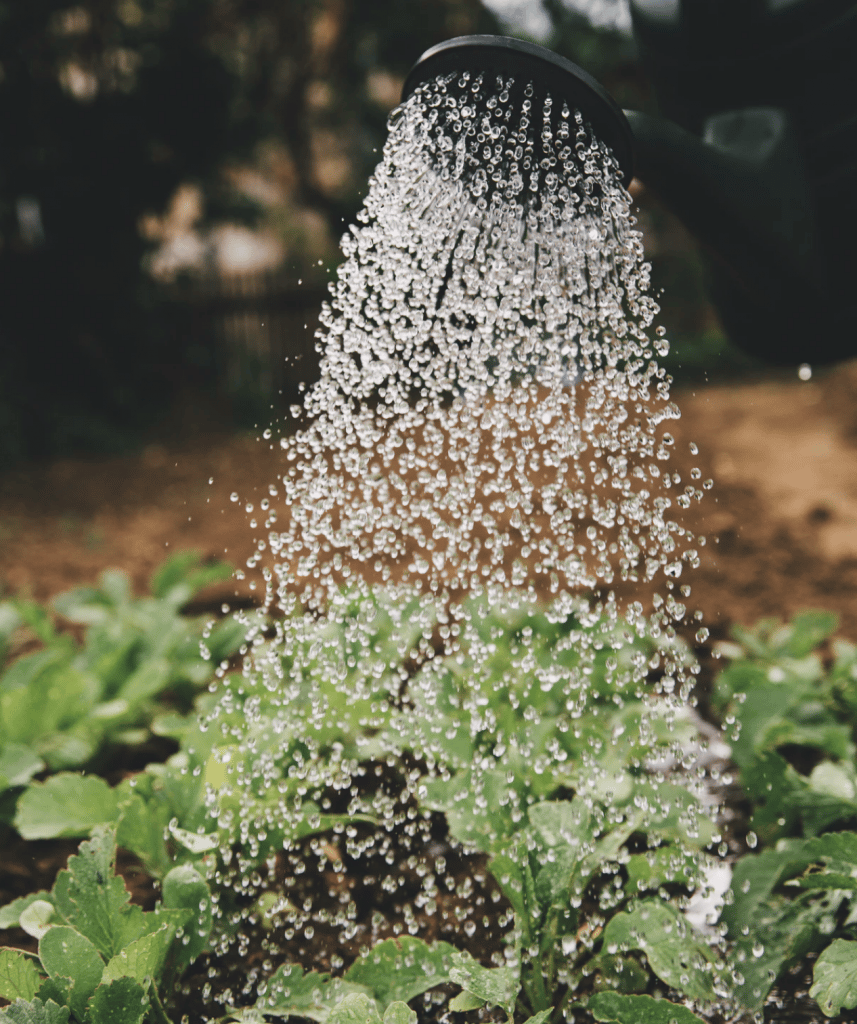
How Often Should I Water My Organic Garden?
Watering is an essential part of successfully growing an organic garden. To ensure optimal growth, it is important to understand the frequency and quantity of water needed for plants in the garden to thrive.
The amount and frequency of watering depend on many factors, such as the type of soil, climate, and type of plants grown. For example, sandy soils require more frequent watering than clay soils because they drain faster. In addition, a dry climate will necessitate more frequent and longer periods of watering than a humid climate. The type of plant also plays a role in determining how often the garden should be watered; for instance, vegetables need more water than ornamental flowers.
To determine how often to water a particular organic garden, it is best to observe the condition of the soil and plants over time. The soil should be damp but not soggy; if it feels dry it may need additional water. Also, check if leaves are limp or wilted which could indicate dehydration or over-watering. If all else fails, consider consulting with local agricultural experts who can provide tailored advice specific to a region’s climate and soil conditions.
With proper planning, observation, and care, organic gardeners can ensure their plants receive adequate water for optimal growth and flourishing throughout the growing season.

What Is the Best Way To Prevent Pest Infestations In My Organic Garden?
Organic gardening can be an incredibly rewarding activity, but it also requires a great deal of effort. Pest infestations are one of the biggest challenges that organic gardeners may face. In order to prevent pests from ruining their hard work, there are several steps that can be taken.
The first step in preventing pest infestations is to cultivate a healthy soil environment. Healthy soil contains beneficial microorganisms, such as fungi and bacteria, that naturally keep pests at bay. Good drainage is essential to creating this type of environment; water should be able to move freely through the soil without pooling or saturating it. Composting and mulching also help to create a rich soil structure that is less attractive to pests.
Another important step in preventing pest infestations is to carefully select plants for the garden based on the local climate and native species. Introducing plants that are not well-suited for an area can create an imbalance in the natural ecosystem, making it more vulnerable to pests. Additionally, some plants have built-in defenses which make them more resistant to certain types of insects; choosing these varieties when possible can help deter more widespread damage from occurring.
Organic gardeners also need to be mindful of how they handle weeds and dead plant material in their gardens. Leaving debris on the ground provides refuge for pests, so it’s important for gardeners to dispose of these items quickly and responsibly. Additionally, using natural repellents around the edges of the garden is another useful tactic for keeping unwanted insects away from crops. With careful planning and diligence, organic gardeners can enjoy healthy harvests without fear of pest infestations ruining their efforts.

How Much Mulch Should I Use for My Organic Garden?
Mulch is an important component of an organic garden, as it helps to keep the soil moist, suppresses weed growth, and provides nutrients for the plants. However, deciding how much mulch to use can be a challenge for beginners. To ensure optimal results, the amount of mulch needed will depend on several factors such as the type of plants in the garden and the size of the area being mulched.
When selecting a type of mulch, it’s important to consider how well it will work with your particular soil type. Organic materials such as straw, grass clippings, or shredded leaves are often preferable over inorganic materials like rubber or plastic because they will break down over time and provide additional nutrients to the soil. Once you’ve determined which type of mulch is best suited for your garden, it’s time to decide how thickly to apply it.
As a general rule, most types of organic mulches should be applied at a depth between 2-4 inches of mulch. This will help to retain moisture in the soil while providing adequate insulation against temperature extremes. Keep in mind that thicker layers may need to be used in areas that experience extreme temperatures or heavy rainfall. Likewise, if you plan on planting vegetables or other shallow-rooted plants, thinner layers may be more appropriate. By considering factors such as climate and plant species when determining how much mulch to use for your organic garden, you can ensure that your plants have all they need for optimal growth and protection from pests.
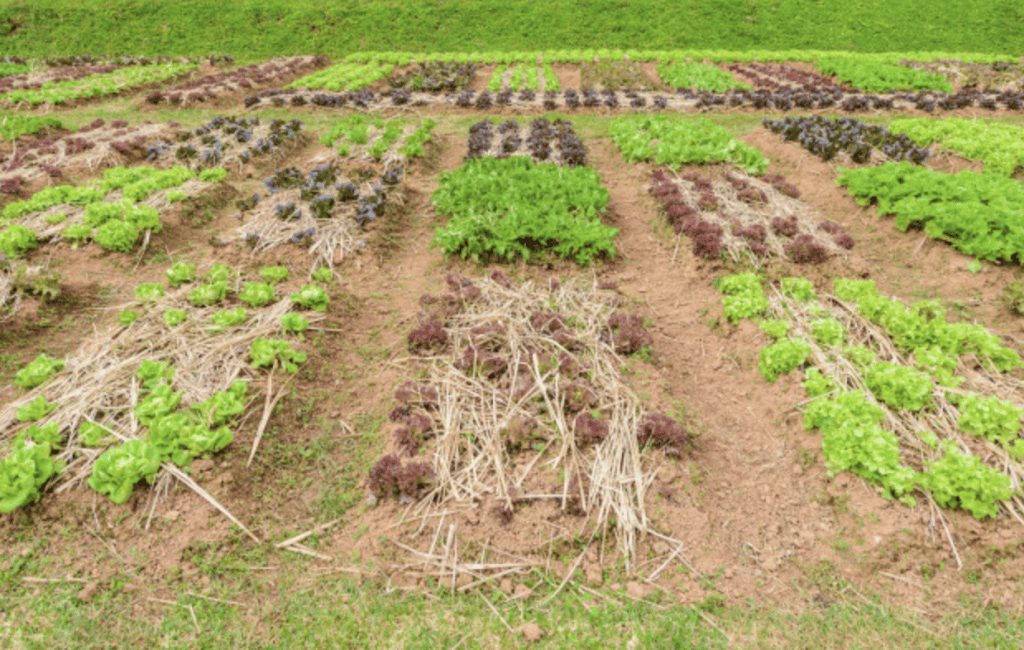
How Much Space Do I Need to Start An Organic Garden?
When deciding to start an organic garden, many people are concerned about the amount of space needed. While it is true that a larger garden may produce more vegetables and flowers, a small-scale organic garden can still be successful with minimal space.
One objection to this notion is that the limited space will not allow for enough yield to make it worth the effort. However, by incorporating vertical gardening techniques and companion planting, even a small area can yield a significant harvest.
Here are some tips to maximize your output in a limited space:
– Utilize vertical planting techniques such as hanging baskets or trellises
– Plant different varieties of vegetables or flowers together, or companion plant
– Use containers or raised beds if you don’t have access to land
Starting an organic garden can offer numerous benefits; from having fresh produce available at your fingertips to reducing your grocery bill and knowing exactly where your food comes from. Even in small spaces, with careful planning and design strategies, you can create an abundant organic garden that you can harvest throughout the season. A sense of accomplishment comes from watching your plants grow and thrive, giving you an opportunity for connection and belonging within nature.

Conclusion
Organic vegetable gardening is a rewarding endeavor that can benefit both the environment and the gardener. Despite its many advantages, starting an organic garden can be intimidating to beginners. However, with the right preparation and knowledge, anyone can successfully create an organic garden.
When starting an organic garden, it is important to consider factors such as soil type, water requirements, pest prevention methods, mulch use, and space needs. Taking into account these factors will help ensure a bountiful harvest of organic fruits and vegetables. Furthermore, according to recent studies conducted by the National Gardening Association, over 40% of all households in the United States partake in some form of home gardening activity each year. This statistic clearly illustrates how popular organic gardening has become across America.
Overall, organic gardens are great investments of time and energy that provide numerous ecological benefits while also allowing individuals to experience the joys of growing their own food. With careful planning and dedication, novice gardeners can easily join this ever-growing movement toward sustainable agriculture.



